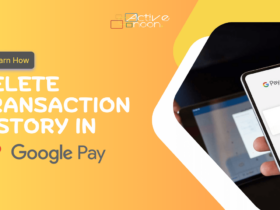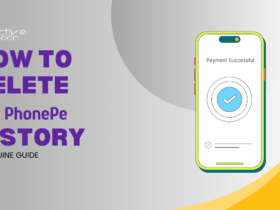Proper execution of mobile push notifications offers users relevant information to encourage app usage. However, incorrect implementation can lead to harmful effects, such as app uninstalls. So, how can you prevent users from leaving and uninstalling your app for good? Stop making notification mistakes so that the user gets real value from notifications.

How to Avoid Mobile Mistakes?
1 Notifications are not email
Push notifications serve as a tool for instantly broadcasting concise messages. However, it is essential to note that they should not replace emails or other marketing methods. While push messages can be used to notify users about various events, certain information is better conveyed through emails, advertisements, and similar formats.
For example, a push notification can be used to send appointment reminders, but detailed messages are more effectively conveyed through emails. Ensure that your messages have a specific purpose and are crafted precisely. Use fewer words and incorporate engaging phrases to capture users’ attention and motivate them to open the app or visit a specific page.
2 Wrong timing
People often make the mistake of timing push notifications incorrectly, which can be avoided. Understanding your audience’s receptiveness and sending notifications accordingly is crucial. If you send notifications when people are busy or distracted, they will likely ignore them. On the other hand, sending messages when people are relaxed and have free time increases their chances of paying attention. Therefore, getting the timing right is essential for effective push notifications.
3 Not personalizing
When sending out notifications, avoid making the worst mistakes of poor targeting and generalization. Remember that a one-size-fits-all approach does not impress everyone. Instead, consider customer type, behavior, and journey when customizing your messages. Practice segmentation and divide your audience based on device or operating system (Android or iOS), location, demographics, sociocultural and financial backgrounds, progression in the funnel, and past customer behavior. Trigger and customize push notifications based on the targeted customer base’s activity and interests for the best results.
From a user’s perspective, you have 2 approaches: block notifications or uninstall the app. The first option allows you to avoid app mistakes in creating notifications, but you also won’t receive useful information. If the app is not very valuable, just use a phone cleaner and get rid of it. You can use a phone app cleaner to free up space, protect yourself from annoying notifications, and speed up your smartphone. You can get the cleaner from this link on the App Store. Just try to choose an analog with a better implementation of notifications and other functions.
4 Too many notifications
To maintain user engagement and ensure push notifications are not disabled, it is important to analyze user engagement data and prioritize delivering a positive user experience. Sending push notifications correctly involves following a thoughtful approach. Every marketer should ask themselves fundamental questions before sending out push notifications:
- Relevance: Does the content of the push notification genuinely relate to the recipient’s interests or previous interactions with your app? Personalization can greatly enhance engagement.
- Timing: Have you considered the timing of your push notification? Sending messages at inappropriate hours might annoy users. Analyze their behavior to determine the best timing.
- Frequency: Are you bombarding users with excessive notifications? Strike a balance between staying connected and overwhelming your audience.
- Value: What value does the push notification offer to the user? It should provide something beneficial, whether it’s information, a discount, or a solution to a problem.
5 Static notifications
Sending static notifications is a common mistake that fails to consider user preferences or past behavior. Consequently, these notifications can often become irrelevant or annoying. To avoid such mistakes, always send push notifications based on the user’s preferences. Achieve this by considering the user’s past behavior, such as visiting websites or viewing products. Personalizing notifications ensures relevance and excitement for users.
6 Ignoring data
To ensure the relevancy of push notifications, make sure they are tailored to your users. For instance, when notifying users about a sale, ensure that it reaches those genuinely interested in your product.
Sending irrelevant notifications can lead to annoyance and even cause users to unsubscribe from your push notifications completely. Remember the purpose of conducting studies and tests is to gain a deeper understanding of your users. Utilize the data you’ve gathered to your advantage and avoid wasting valuable information.
7 Not tracking notification effectiveness

Determining the success of your campaigns heavily relies on data. Utilize insights to create personalized messages and monitor their performance through key metrics. These metrics include opt-in and opt-out rates, delivery and click-through rates, customer retention rates, conversions and revenue fluctuations, and more.
Avoid the mistake of blindly sending notifications without evaluating their impact. Focus on essential data points and assess the overall effect of push notification campaigns on your business. Leverage this information to strategize and optimize future campaigns, enabling data-driven decisions for your business and marketing endeavors.
Conclusion
Notifications can be a valuable tool for outreach to new and returning customers. However, the wrong approach or understanding of push notifications can have the opposite effect. Most users will simply uninstall the app, or if they don’t want to give it up, they’ll simply turn off notifications. Avoid the mistakes described above and you can get bonuses from technology.



















Leave a Reply